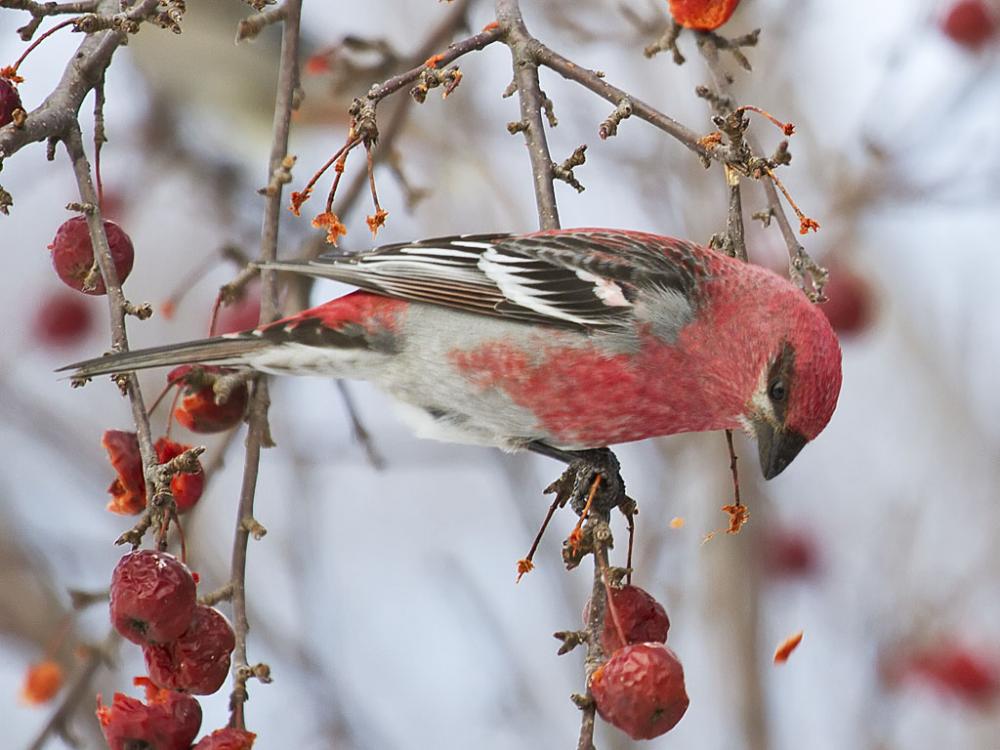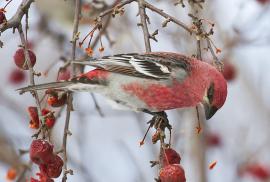Guide to Boreal Birds
Overview
Largest of the northern finches, the Pine Grosbeak is less common than the Pine Siskin or the redpolls. When these birds do appear their preference for the seeds and fruit of trees such as mountain ash and cedar makes them more conspicuous than their smaller relatives. They are very tame and slow moving, allowing close approach. During snowy winters these grosbeaks can be located in scattered open forests by the feeble calls that keep the flock together. They settle in a tree and feed, snapping off buds or seeking the pits in fruit, until sated or disturbed. When food is scarce, they may descend from mountains into woods at sea level.
Description
8-10" (20-25 cm). A large plump finch. Stubby, strongly curved black bill. Male has dull rose-red body, with dark streaking on back, dark wings with 2 white wing bars, and dusky, notched tail. Juvenile male dull pinkish red on head and rump, with gray body. Females similar to first-year males in pattern, with dull mustard head and rump markings.
Voice
A 3-note whistle similar to that of Greater Yellowlegs.
Nesting
2-5 pale blue-green, blotched eggs in a bulky nest of grasses, rootlets, and moss lined with hair; nest placed low in a coniferous tree, usually no more than about 10-12' (3-4 m) from the ground.
Habitat
Coniferous forests.
Range/Migration
Breeds from Alaska east to Newfoundland and Nova Scotia, and south in western mountains to California and Arizona. Winters south to Dakotas and New York, occasionally farther. Also in Eurasia.



